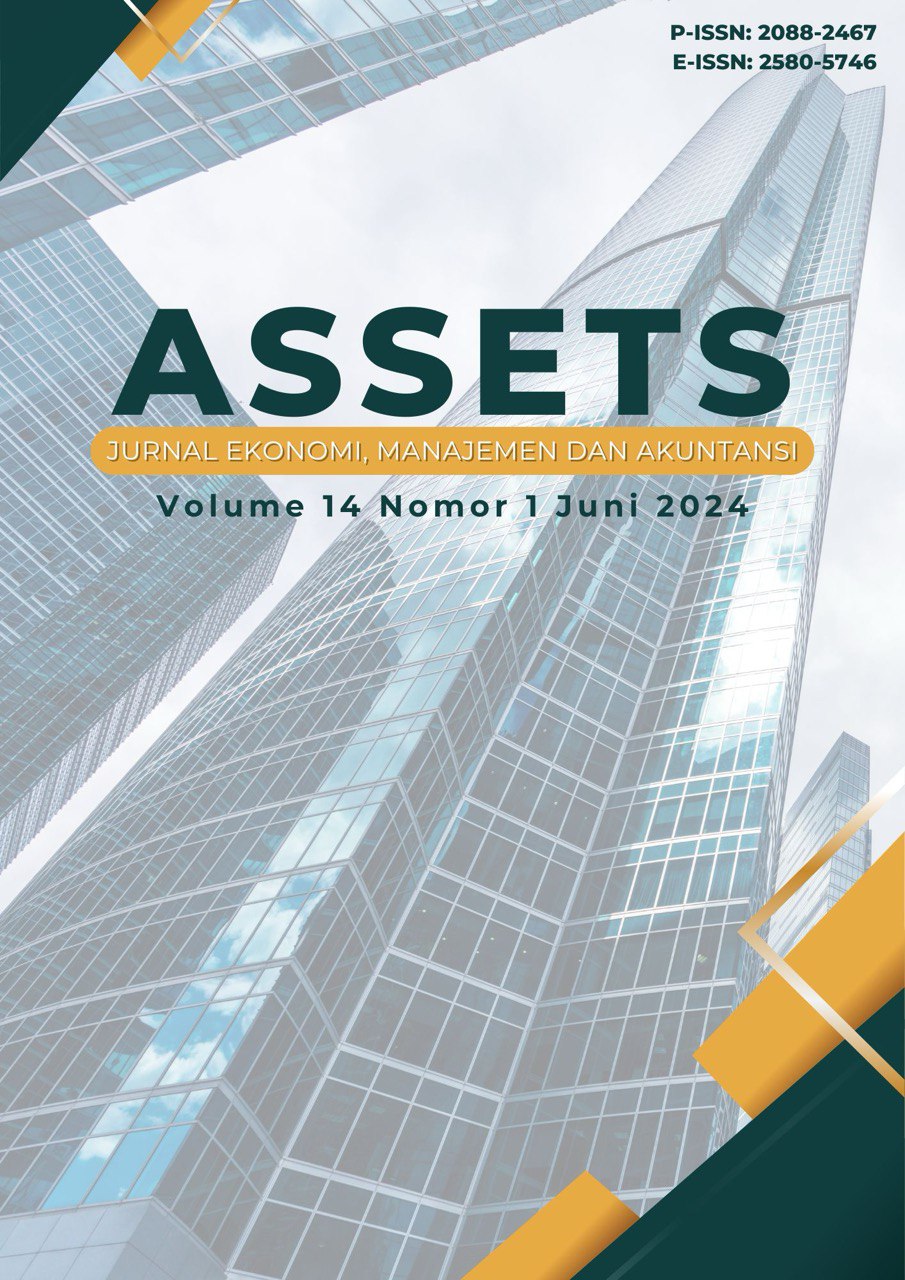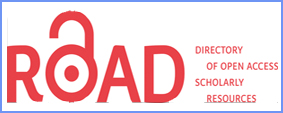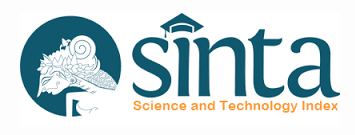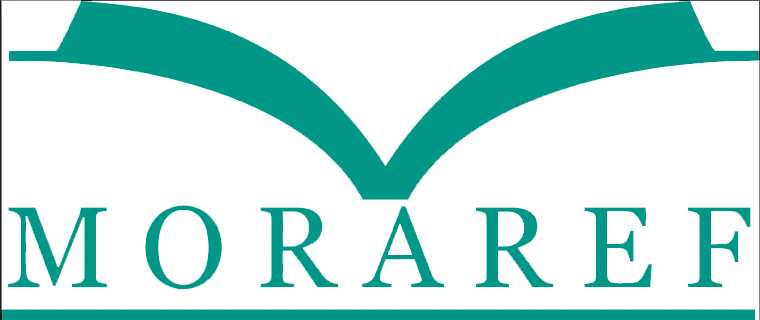THE INFLUENCE OF STRATEGIC AGILITY ON COMPETITIVE ADVANTAGE WITH ORGANIZATIONAL AMBIDEXTERITY AS MEDIATION AT MSME'S IN BANDAR LAMPUNG
Abstract
Changes in economic behavior can be an obstacle for MSMEs, because there are still many MSMEs that are not ready for the changes that are occurring. In fact, the changes that often occur in the economic world can actually be used as a success factor for competitive advantage, if the company is able to take the right steps and strategies in a short time. This research aims to show strategies that can be used to increase the competitive advantage of MSMEs by involving strategic agility and through organizational ambidexterity as mediating variables. The population of this research is MSMEs in the culinary sector in Bandar Lampung City, namely 1,162 MSMEs. The total sample was 298 respondents obtained using the Slovin method. The analysis method uses a structural equation model (SEM) approach with the SmartPLS application. The research results show that strategic agility can have a positive and significant effect on competitive advantage. Strategic agility has a positive and significant effect on organizational ambidexterity. Organizational ambidexterity can have a positive and significant effect on competitive advantage. And organizational ambidexterity is able to mediate the influence of strategic agility on competitive advantage. Apart from that, MSMEs must be run in accordance with Islamic business ethics.
References
Ahammad, M. F., Basu, S., Munjal, S., Clegg, J. & Shoham, O. B. (2021). Strategic agility, environmental uncertainties and international performance: The perspective of Indian firms. Journal of World Business, 56(4). https://doi.org/10.1016/j.jwb.2021.101218
Ahmed, W., Najmi, A., Mustafa, Y. & Khan, A. (2019). Developing model to analyze factors affecting firms’ agility and competitive capability. Journal of Modelling in Management, 14(2), 476–491. https://doi.org/10.1108/JM2-07-2018-0092
Alhosseiny, H. (2022). THE IMPACT OF STRATEGIC PLANNING, STRATEGIC THINKING, AND STRATEGIC AGILITY ON COMPETITIVE ADVANTAGE: LITERATURE REVIEW The effect of applying the main business-level strategies on gaining competitive advantage (By application on the food sector in Egypt) View project. https://www.researchgate.net/publication/366685793
Arokodare, M. A. &, Asikhia, O. U. & Arokodare, M. A. Α. (2020). Strategic Agility: Achieving Superior Organizational Performance through Strategic Foresight.
Budiman, M. A., Soetjipto, B. W., Kusumastuti, R. D. & Wijanto, S. (2023). Organizational agility, dynamic managerial capability, stakeholder management, discretion, and project success: Evidence from the upstream oil and gas sectors. Heliyon, 9(9). https://doi.org/10.1016/j.heliyon.2023.e19198
Clauss, T., Abebe, M., Tangpong, C. & Hock, M. (2021). Strategic Agility, Business Model Innovation, and Firm Performance: An Empirical Investigation. IEEE Transactions on Engineering Management, 68(3), 767–784. https://doi.org/10.1109/TEM.2019.2910381
Databoks. (2020, 26. August). Konsumen Beralih Berbelanja secara Digital saat Pandemi. Katadata Media Network. https://databoks.katadata.co.id/datapublish/2020/08/26/konsumen-beralih-berbelanja-secara-digital-saat-pandemi
Dewan Perwakilan Rakyat Replublik Indonesia. (2021, 9. April). 30 Juta UMKM Bangkrut, Kemenkop UKM Diminta Lakukan Pedataan dan Evaluasi. Dpr.Go.Id. https://www.dpr.go.id/berita/detail/id/32556/t/30Juta+UMKM+Bangkrut%2C+Kemenkop+UKM+Diminta+Lakukan+Pedataan+dan+Evaluasi
Doz, Y. L. & Kosonen, M. (2010a). Embedding Strategic Agility. Long Range Planning, 43(2–3), 370–382. https://doi.org/10.1016/j.lrp.2009.07.006
Doz, Y. L. & Kosonen, M. (2010b). Embedding Strategic Agility. Long Range Planning, 43(2–3), 370–382. https://doi.org/10.1016/j.lrp.2009.07.006
Dwi Nur Maulidia, Mohammad Ricko Kurniawan & Muhammad Yasin. (2023). Faktor-Faktor Krisis Dan Dampak Krisis Yang Pernah Terjadi Di Indonesia Sehingga Mengakibatkan Kerapuhan Fundamental. Student Scientific Creativity Journal, 1(4), 181–193. https://doi.org/10.55606/sscj-amik.v1i4.1619
Elali, W. (2021). The Importance of Strategic Agility to Business Survival During Corona Crisis and Beyond. International Journal of Business Ethics and Governance, 1–8. https://doi.org/10.51325/ijbeg.v4i2.64
Fiona, F. & Rahmayanti, D. (2022). ANALISIS DAMPAK PANDEMI COVID-19 BAGI UMKM DAN IMPLEMENTASI STRATEGI DIGITAL MARKETING PADA UMKM INDONESIA. Managament Insight: Jurnal Ilmiah Manajemen ISSN, 17(2), 298–322. https://doi.org/10.33369/insight.17.2.298-322
Gerald, E., Obianuju, A. & Chukwunonso, N. (2020). Strategic agility and performance of small and medium enterprises in the phase of Covid-19 pandemic. International Journal of Financial, Accounting, and Management, 2(1). https://doi.org/10.35912/ijfam.v2i1.163
Ghozali, imam & Latan, H. (2015). Partial Least Squares Konsep Teknik dan Aplikasi dengan Program Smart PLS 3.0. Universitas Diponegoro Semarang.
Gibson, J. & Rioja, F. (2014). A Bridge to Equality: How Investing in Infrastructure Affects the Distribution of Wealth.
Hitt, M., Irlandia, R. D. & Hoskisson, R. E. (2013). Manajemen Strategis: Daya Saing dan Globalisasi (10th ed.). Cengage Southwestern Publishing Co.
Hutauruk, M. (2022). Metodologi Penelitian Ilmu Ekonomi; Pendekatan Metode dan Teknik Sederhana Menembus Jurnal Bereputasi (1st ed.). Expert.
Ilham Refachlis, M., Denta, M., Uchtiyani, A., Supia, I. & Ria, P. (2021). PERUBAHAN PERILAKU KONSUMEN DI INDONESIA SELAMA COVID-19. https://www.researchgate.net/publication/350766900
Lee, Y. Y. & Falahat, M. (2019). The impact of digitalization and resources on gaining competitive advantage in international markets: Themediating role ofmarketing, innovation and learning capabilities. In Technology Innovation Management Review (Vol. 9, Issue 11, pp. 26–38). Carleton University. https://doi.org/10.22215/TIMREVIEW/1281
Lubatkin, M. H., Simsek, Z., Ling, Y. & Veiga, J. F. (2006). Ambidexterity and Performance in Small-to Medium-Sized Firms: The Pivotal Role of Top Management Team Behavioral Integration. Journal of Management, 32(5), 646–672. https://doi.org/10.1177/0149206306290712
Melati, W. P. (2022, 29. September). UMKM Mulai Menggeliat Pasca Pandemic Covid 19. Kementrian Keuangan Republik Indonesia. https://www.djkn.kemenkeu.go.id/kpknl-lhokseumawe/baca-artikel/15474/UMKM-Mulai-Menggeliat-Pasca-Pandemic-Covid-19.html
Nurwendi, W. & Haryadi, D. (2022). Peran Ambidexterity Organisasi Sebagai Variabel Intervening Dalam Meningkatkan Kinerja Pemasaran UMKM Di Masa Covid-19. IQTISHADUNA: Jurnal Ilmiah Ekonomi Kita, 11(1), 47–64. https://doi.org/10.46367/iqtishaduna.v11i1.513
Panggabean, A. N. (2020). PERAN ORGANIZATIONAL AMBIDEXTERITY TERHADAP EFEKTIVITAS PERUSAHAAN.
Perilaku, P., Selama, K., Covid-19 Cholilawati, P. & Suliyanthini, D. (2020). Equlibrium : Jurnal Pendidikan. 1. https://journal.unismuh.ac.id/index.php/equilibrium/index
Permana, E., Purnomo, M., Santoso, R. & Syamsurizal, S. (2021). THE INFLUENCE OF STRATEGIC AGILITY ON SUSTAINABILITY COMPETITIVE ADVANTAGE THROUGH BUSINESS COMPETITIVE ACTION OF SICEPAT EXPRESS. AdBispreneur, 6(1), 79. https://doi.org/10.24198/adbispreneur.v6i1.32584
Raisch, S. & Birkinshaw, J. (2008). Organizational Ambidexterity: Antecedents, Outcomes, and Moderators. Journal of Management, 34(3), 375–409. https://doi.org/10.1177/0149206308316058
Reed, J. (2021). Strategic agility in the SME: Use it before you lose it. Journal of Small Business Strategy, 31, 33–46.
Sadiyah, F. (2021). Dampak Pandemi Covid-19 terhadap Pertumbuhan Ekonomi dan Perdagangan Komoditas Pertanian di Indonesia. Jurnal Ekonomi Pertanian Dan Agribisnis, 5(3), 950–961. https://doi.org/10.21776/ub.jepa.2021.005.03.30
Sancoyo, N. & Wicaksana, S. A. (2023). ANALISA PENGARUH ORGANIZATIONAL STRUCTURE, DYNAMIC CAPABILITIES DAN CORPORATE CULTURE TERHADAP ORGANIZATION AGILITY TIM PRODUK BRIMO DALAM RANGKA TERCIPTANYA SUSTAINABLE COMPETITIVE ADVANTAGES PT. BANK RAKYAT INDONESIA (PERSERO), TBK. Journal of Economics and Business UBS, 12(3).
Sudarti Nurhidayati Ardian Adhiatma, K., Ilmiah Ekonomi, J., Sudarti, K. & Adhiatma, A. (2018). The Role of Organizational Ambidexterity to Increase Innovation Speed and Marketing Performance of SMEs. Jurnal Ilmiah Ekonomi. http://ejournal.stiepena.ac.id/index.php/fe
Tabe Khoshnood, N. & Nematizadeh, S. (2017). Strategic Agility and Its Impact on the Competitive Capabilities in Iranian Private Banks. International Journal of Business and Management, 12(2), 220. https://doi.org/10.5539/ijbm.v12n2p220
Teece, D. J. (2018). Business models and dynamic capabilities. Long Range Planning, 51(1), 40–49. https://doi.org/10.1016/j.lrp.2017.06.007
Tsilionis, K. & Wautelet, Y. (2022). A model-driven framework to support strategic agility: Value-added perspective. Information and Software Technology, 141. https://doi.org/10.1016/j.infsof.2021.106734
Venkatram, V. (2019). The Digital Matrix-New Rules for Business Transformation Trough Technology. www.sieberpartners.com
Yunita, T., Sasmoko, S., Bandur, A. & Alamsjah, F. (2023). Organizational ambidexterity: The role of technological capacity and dynamic capabilities in the face of environmental dynamism. Heliyon, 9(4). https://doi.org/10.1016/j.heliyon.2023.e14817
Copyright (c) 2024 Assets : Jurnal Ekonomi, Manajemen dan Akuntansi

This work is licensed under a Creative Commons Attribution-NonCommercial-ShareAlike 4.0 International License.










